NRSG 140: Reflection on Blood Sugar Test Demonstration and Skills
VerifiedAdded on 2022/10/14
|5
|956
|16
Practical Assignment
AI Summary
This assignment is a reflective piece by a nursing student on a blood sugar test demonstration performed in the NRSG 140: Integrating Practice 2 unit. The student describes the introduction to the procedure, including the tutor's demonstration and the student's initial feelings of nervousness. The student evaluates the experience, highlighting the positive outcome of a successful test and the resulting increase in confidence. An analysis of the student's presentation and performance skills reveals strengths in carrying out demonstrations and real tests, as well as the importance of critical thinking and systematic decision-making in nursing practice. The student concludes with a commitment to continuous improvement, including educating patients and seeking opportunities to practice the skill. An action plan is outlined, focusing on patient education, consistent practice, and the avoidance of errors. The student also references relevant literature supporting the importance of reflective practice and clinical competence.
1 out of 5
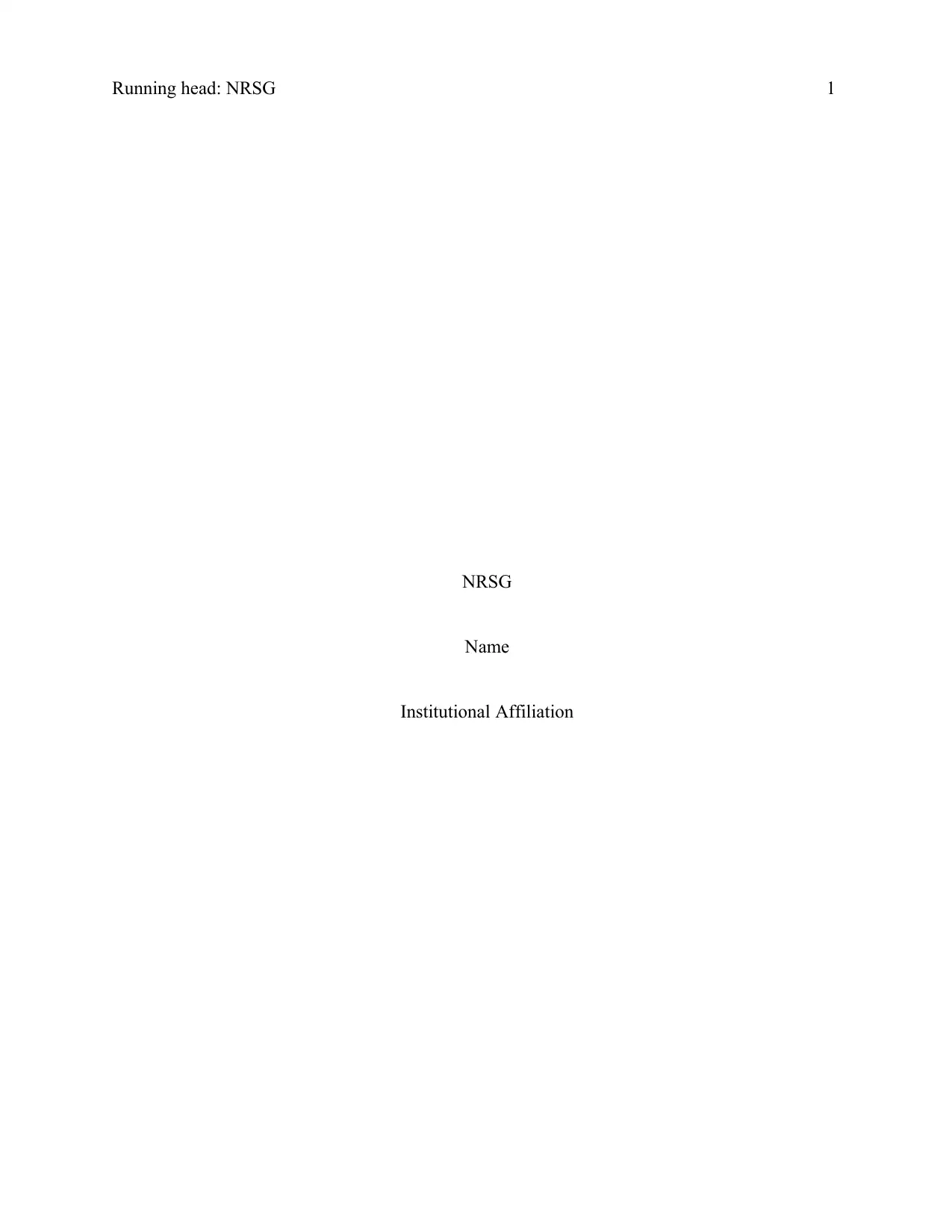
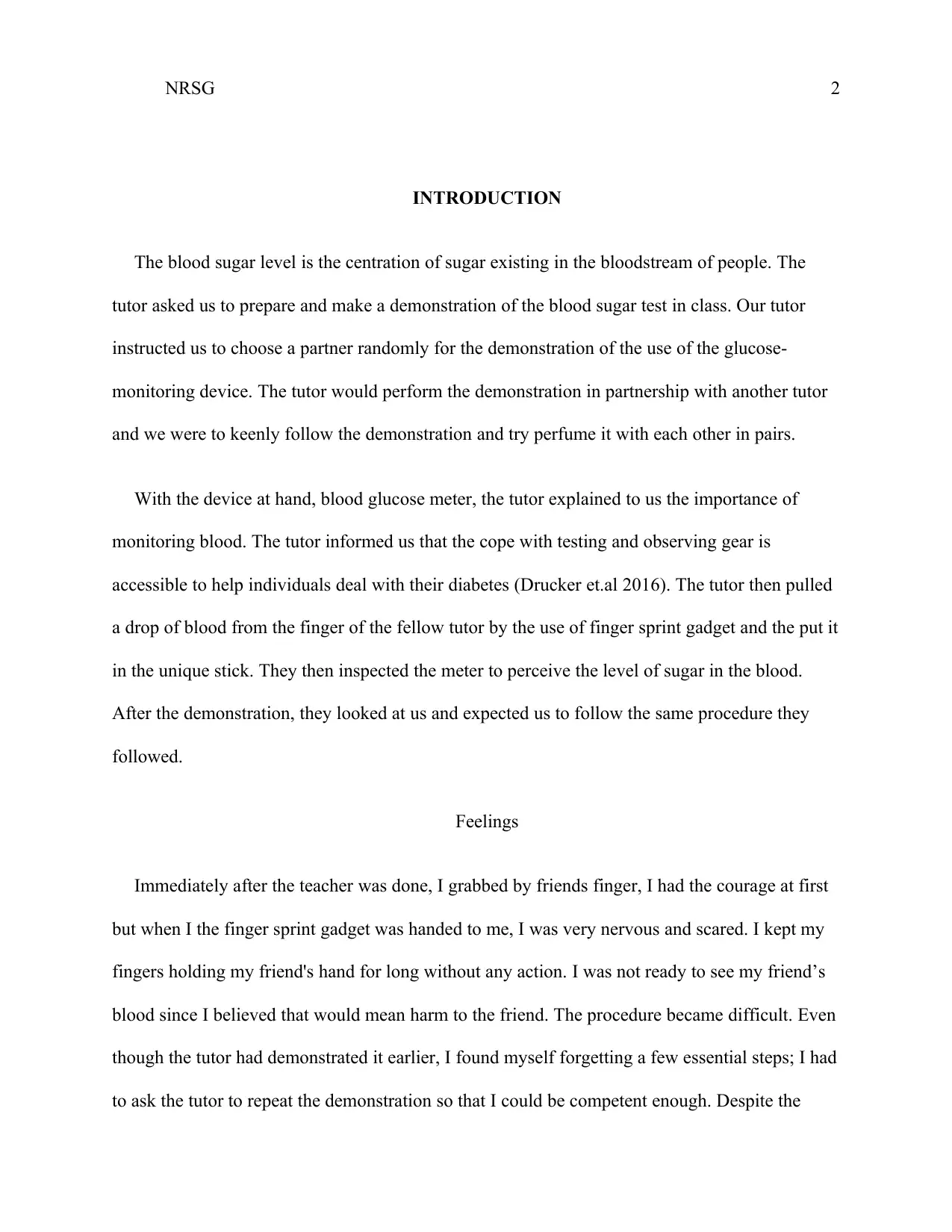
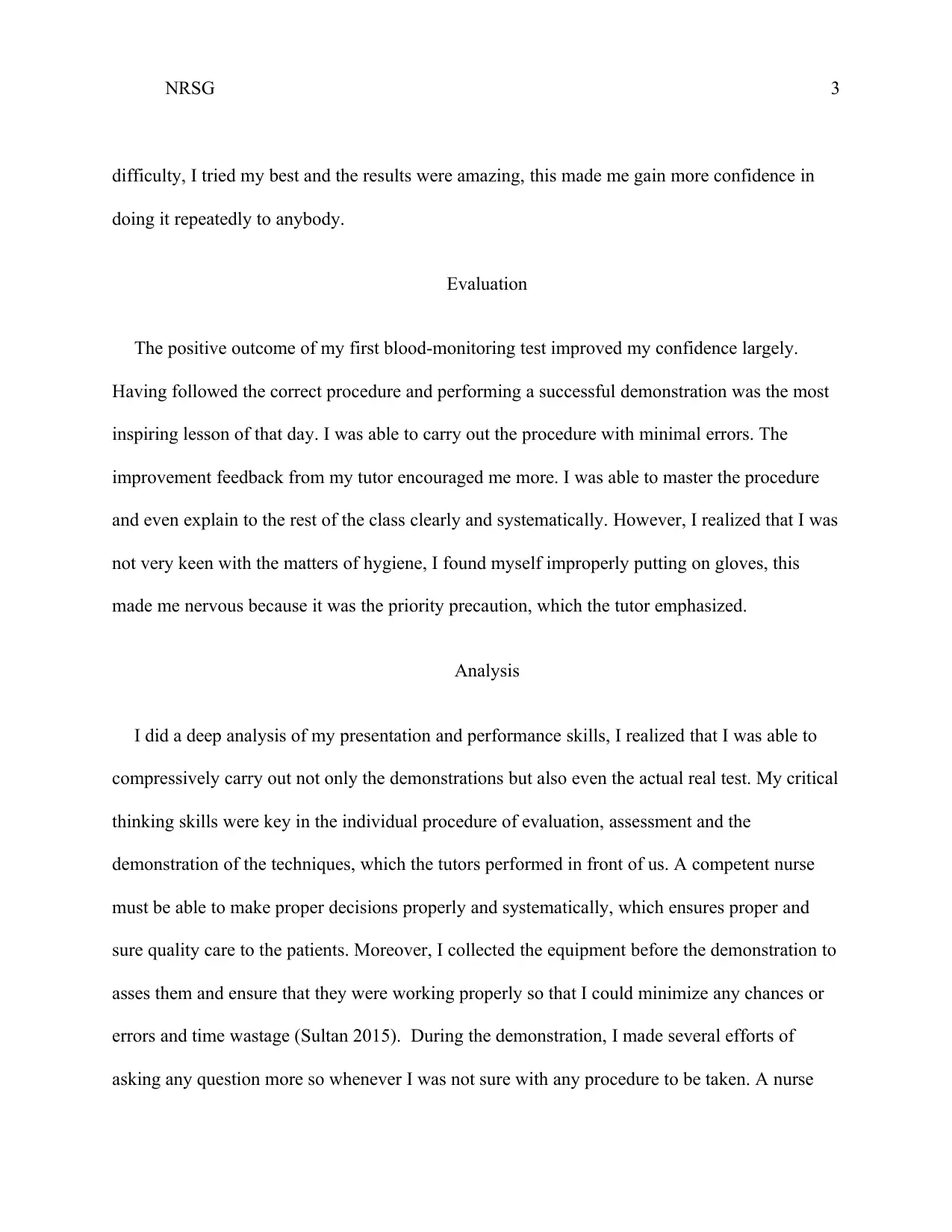

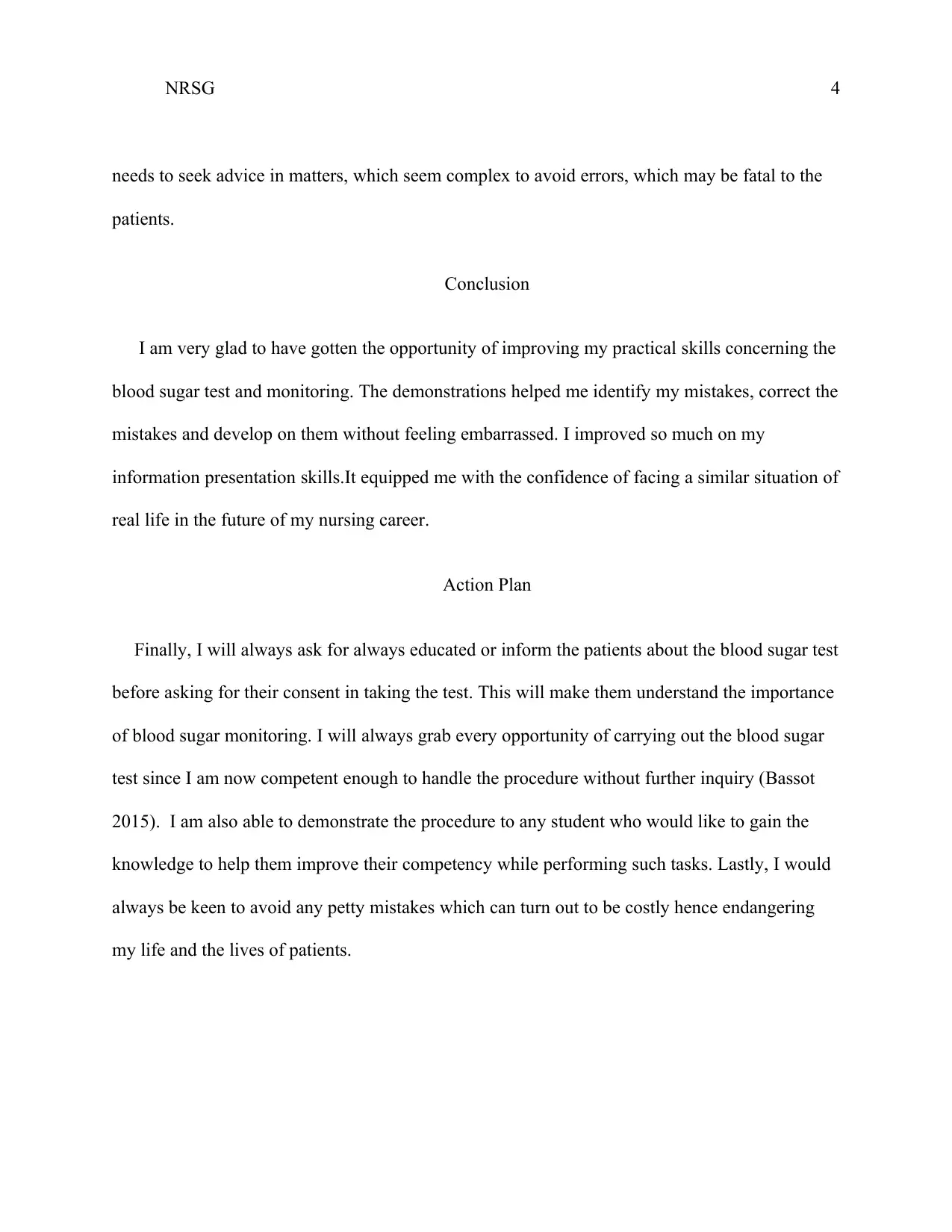
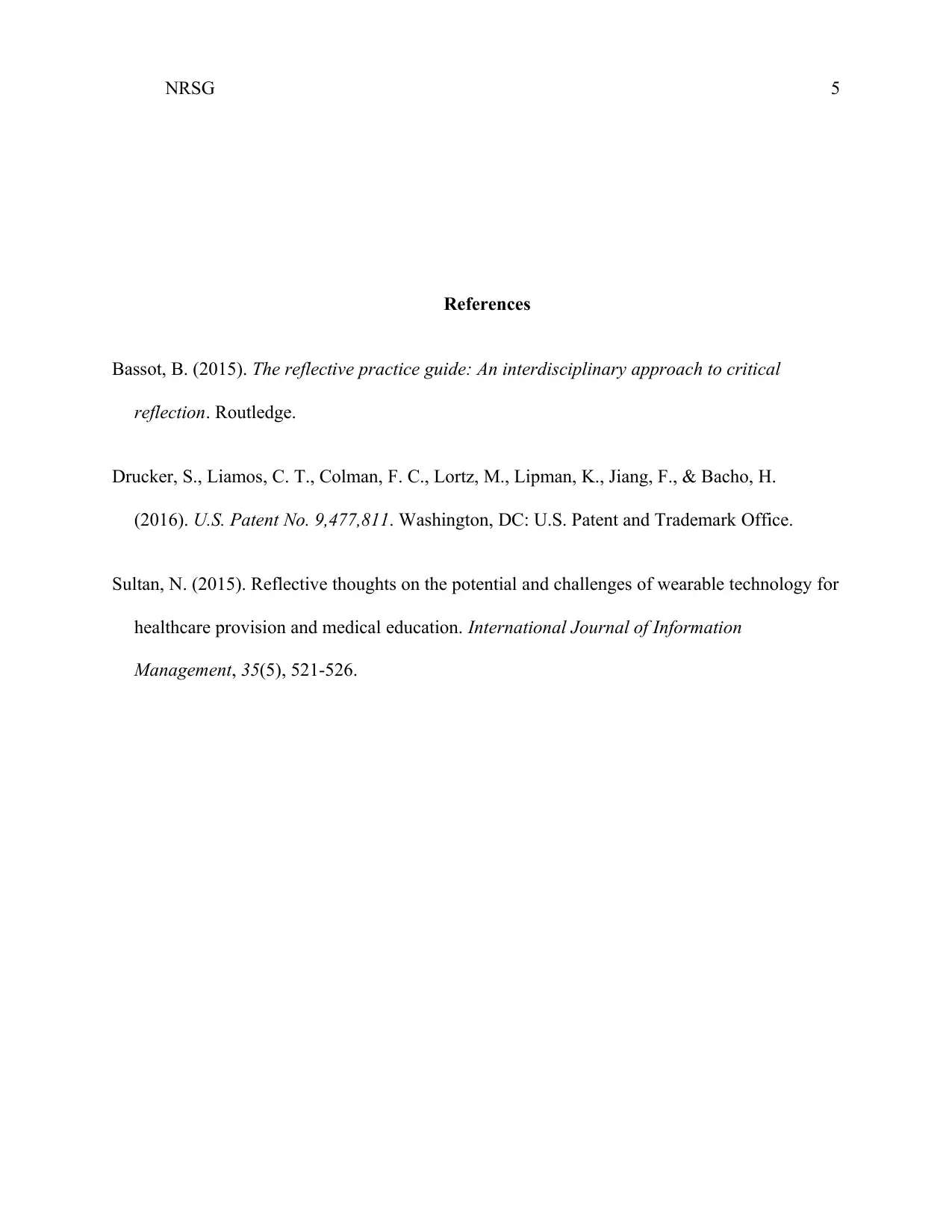






![[object Object]](/_next/static/media/star-bottom.7253800d.svg)